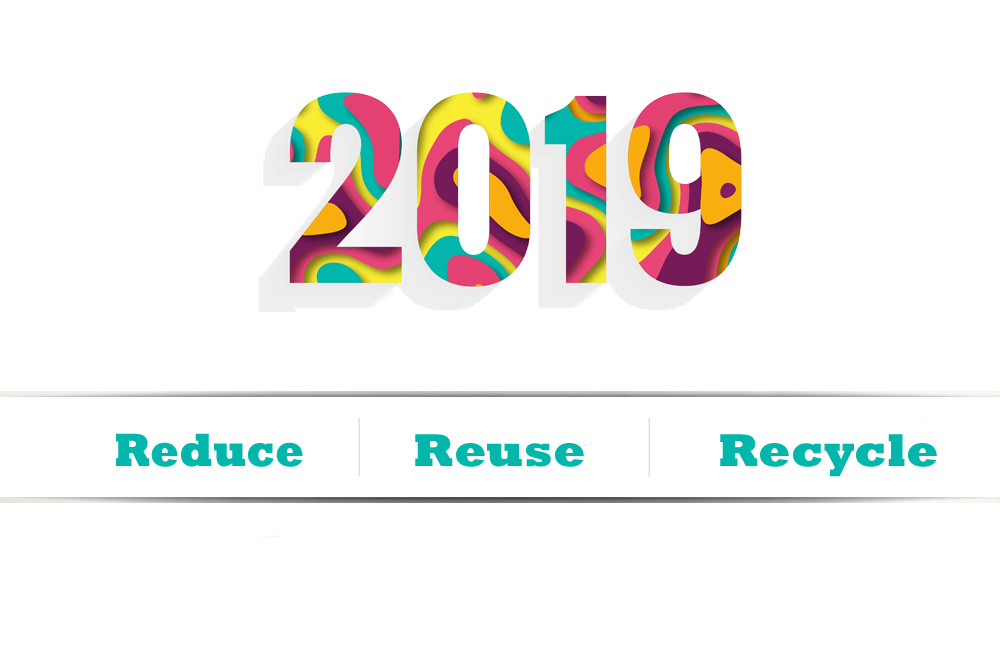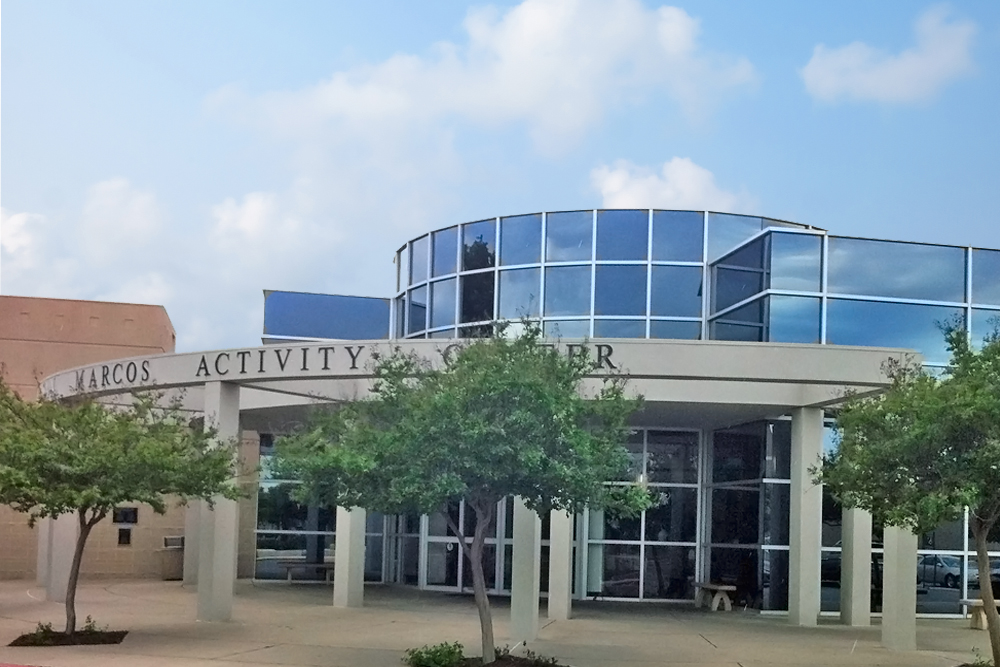
A Great New Year’s Resolution – Reduce Your Waste
![]() Each Texan currently generates about 6.5 pounds of trash every day, and Texas’ population is growing. More residents means more trash and more space to dispose of it…
Each Texan currently generates about 6.5 pounds of trash every day, and Texas’ population is growing. More residents means more trash and more space to dispose of it…
![]()
Each Texan currently generates about 6.5 pounds of trash every day, and Texas’ population is growing. More residents means more trash and more space to dispose of it. Our population is expected to double by 2070. At that rate, we only have landfill space to last another 56 years.
Take Care of Texas and Texas Commission on Environmental Quality (TCEQ) wants to encourage every Texan to reduce waste and help keep Texas land clean!
![]()
![]()
1 Buy less, and buy reusable or recycled-content products when you can
You can reduce the waste in your home by buying only the products you need, and using up the products you buy for their intended purpose. Choose products that are reusable or refillable over single-use items. Buy products, such as office supplies for home and work, made from or packaged in recycled materials. Items made from recycled content are manufactured with fewer virgin materials.
- Take reusable bags and containers when shopping or packing lunches or leftovers.
- Swap paper towels, plates, and napkins for reusable ones.
- Buy in bulk. Avoid individually wrapped items, snack packs, and single-serve containers.
- Purchase items such as dish soap and laundry detergent in concentrated forms.
- Keep some of your worn-out clothes and bedding for rags.
- Use your library or an electronic device to read magazines and books.
- When something is broken, try to repair it before replacing it.
![]()
2 Repair, resell, donate or recycle your old electronics
Used electronics account for 1.2 percent of the municipal solid-waste stream, and is steadily increasing. The average household has approximately 28 electronic devices. You can help by purchasing refurbished electronics, or selling or donating used electronics, as well as recycling them. Electronic products are made from valuable resources and materials, including metals, plastics, and glass, all of which require energy to mine and manufacture.
- Go to TexasRecyclesComputers.org to find how to recycle your computer for free.
- Go to TexasRecyclesTVs.org to find options for recycling your television.
- Visit greenergadgets.org to learn more about recycling electronics and find a recycler in your area.
- Take used computer equipment of any brand to one of Goodwill Industries’ participating locations to be refurbished or recycled responsibly.
- Browse additional TCEQ resources on electronics recycling and waste reduction.
- The EPA has resources for donating or recycling your old electronics.
![]()
3 Recycle rechargeable batteries
Rechargeable batteries commonly found in cordless power tools, cellular and cordless phones, laptop computers, digital cameras, and remote-controlled toys should not be thrown in the trash. Most rechargeable batteries can be recharged up to 1,000 times, but when they no longer hold a charge—recycle them. If every Texas household recycled five rechargeable batteries a year, we could keep more than 46 million batteries out of landfills.
- Visit Call2Recycle.org to find a drop-off site for rechargeable batteries near you.
- According to their websites, a number of stores will accept your old rechargeable batteries.
- Batteries Plus Bulbs
- Lowe’s
- The Home Depot
- Most household-hazardous-waste programs will accept single-use batteries. Find one near you.
![]() 4 Reuse or recycle items such as paper, cardboard, bottles and cans
4 Reuse or recycle items such as paper, cardboard, bottles and cans
Each Texan generates about 6.5 pounds of garbage every day. By reusing and recycling, you can reduce waste sent to landfills, conserve energy, and conserve resources such as timber, water, and minerals. In 2015, Americans generated about 262 million tons of trash and recycled and composted almost 91 million tons, a recycling rate of 34.7 percent.
- Use both sides of every piece of paper.
- Use the backs of unneeded printer paper as scratch pads.
- Look for do-it-yourself ideas for reusing bottles and cans.
- Donate gently used items such as clothing, toys, and household goods to local charities.
- Contact your local government, waste hauler, or landfill to find recycling centers near you.
Download our Texas School Recycling Guide, a technical guide for starting a school recycling program.
Download What Do I Do With It Now?, a short guide to recycling information for other household and automotive materials.
![]() 5 Start a compost pile at home
5 Start a compost pile at home
Leaves, grass clippings, and other yard debris make up 7.8 percent of the trash sent to landfills each year, and it costs Texans over $250 million to collect and dispose of that waste. Instead of throwing them out with the garbage, try recycling yard materials and certain food waste by composting them. Compost reduces the need for watering by up to 60 percent.
- Composting works best when you combine equal amounts (by weight) of green and brown materials in the mixture.
- The compost pile should remain moist throughout, like a wrung-out sponge, but not soaked.
- Compost breaks down faster in a pile at least 3 feet high and 3 feet in diameter, with all the materials broken into small pieces and well mixed.
- You can tell a pile is quickly and actively composting when it gets at least as hot as the hot water in your house. Temperatures that high (140 degrees Fahrenheit or higher) can kill most weed seeds and germs that cause disease. Help your pile stay hot by putting it in a bin or covering it with a tarp. You can use a special compost thermometer to monitor its temperature.
For more detailed information, download Mulching and Composting Guide.
![]() 6 Use mulch
6 Use mulch
The best mulch for your yard is one created from native sources and could include straw, newspaper, sawdust, bark, pine needles, leaves, grass clippings, and compost. Mulch is beneficial by aiding in root development, preventing erosion, suppressing weeds, moderating soil temperature, and adding nutrients as they break down slowly. Mulching also reduces waste and helps conserve water by reducing water lost through evaporation.
- To control erosion in a lawn, cover bare areas with 2 to 4 inches of mulch.
- Mulch all areas that are not covered in grass or thick ground cover.
- When converting grassy areas to mulch, smother the grass with a thick layer of cardboard or newspaper rather than using chemicals. Some hardy grasses must be rooted out for successful removal.
- Blanket dormant perennials with several inches of shredded leaves or whole pine needles to protect them from the freezing weather.
- Spread mulches under annuals after they are well established.
- Water the ground thoroughly before and after applying a mulch cover.
- Do not put organic mulch where water flows rapidly or it may wash out.
- Rock and other heavy, inert materials can be used in berms or buffers to slow the flow of water entering mulched areas, protecting them from washout.
For more detailed information, download our Mulching and Composting Guide.
![]() 7 Cut back on the amount of junk mail you receive
7 Cut back on the amount of junk mail you receive
Consumers and businesses receive more than 78 billion pieces of junk mail each year; most of this ends up in our landfills. Make certain you opt out of unwanted, prescreened offers of credit and insurance.
- You can easily opt out of offers of credit and insurance on the Consumer Credit Reporting Industry website.
- Visit the Direct Marketing Association’s Mail Preference Service to stop receiving commercial mail from many national companies.
Important: Both secured sites are recommended by the Federal Trade Commission and will ask for personal information.
![]() 8 Reduce your household hazardous waste
8 Reduce your household hazardous waste
Leftover or used household products that contain potentially hazardous ingredients are often referred to as household hazardous waste (HHW). This includes used light bulbs, leftover drain cleaner, and other potentially hazardous substances you no longer need or want to keep. You can reduce your HHW buying only the products you need, and using up the products for their intended purpose.
- Buy only what you need to do the job. Buying chemicals in bulk may not be saving you money if you do not use all of them.
- Consider using alternative household products that do not contain hazardous materials. The EPA’s Safer Choice program labels products that can help protect the environment.
- For painting projects, know the size of your area and use an online paint calculator to determine how many gallons you should buy.
- Pass on your unexpired chemicals or paint in good condition to friends, relatives, or neighbors who can use them! Doing so will save time and money for yourself and others.
![]() 9 Safely manage your household hazardous waste
9 Safely manage your household hazardous waste
Take special precautions to manage your HHW safely. A safe and environmentally responsible way to collect, share, and dispose of HHW is to take it to a local community collection program. If you do not have access to an HHW collection program, then you can safely and legally dispose of most HHW in landfills that accept regular trash. Find HHW collection centers or events in your area.
To protect both yourself and the workers who accept your HHW at a collection site, follow some basic guidelines and tips for storage, transportation, and care of your material:
- Keep products in their original containers and make sure labels are readable. This ensures you know which products you have and so do the workers who accept and sort your HHW.
- Store and transport your chemicals upright, not on their sides. If you are taking HHW to a facility or event, make sure you have secured it in your vehicle and it is not leaking—it can be dangerous if leaking containers of incompatible chemicals mix.
- Never mix products together. That can be dangerous—even deadly.
- Keep chemicals in a cool, dry place out of reach of children and pets.
![]() 10 Take care of your tires
10 Take care of your tires
More than 47,588 tons of tires were sent to Texas landfills last year! Reduce the number of tires by taking care of the ones you have. Test your tire tread monthly using the penny test. Insert a penny upside down. If you can see the top of Lincoln’s head, the tread is too low. When you can no longer use the tires, make sure to dispose of them properly.
- By keeping your tires at their recommended pressure, they will last longer, deliver better gas mileage, and be safer on the road.
- When you purchase new tires, ask if the tire retailer will take your old ones. Most tire dealers or auto shops will accept tires for a fee.
- A few municipalities will accept a limited number of scrap tires from citizens at no charge.
For more information, visit Scrap Tires: Disposal, Regulation, Registration, Dumps, Abandoned Sites.
![]() 11 Dispose of your food scraps, fats, oils and grease properly
11 Dispose of your food scraps, fats, oils and grease properly
Fats, oils, and grease (FOG) come from meats, butters, lard, food scraps, sauces, dressings, dairy products, and cooking oil. FOG disposed of in the drain can accumulate inside sewer pipes, causing expensive backups and plumbing emergencies. This can cause untreated wastewater to back up into homes, businesses, lawns, parks, and streets.
- Some types of food waste can be composted rather than being washed down the drain, such as vegetable and fruit scraps, coffee grounds and filters, and tea bags. You may be able to place foods containing meat, bones, fish, dairy products, grease, and oil in your curbside compost bin*. Otherwise, dispose of these foods in the trash, not your sink.
- Use strainers to catch food scraps that would otherwise be washed down the drain. Throw the scraps in the trash or your curbside compost bin*.
- Don’t pour cooking oil down the drain. Collect used cooking grease or oil in a sealable container and place it in the trash.
- Wipe pots, pans, and dishes with paper towels before rinsing or washing them. Then, put the paper towels in your curbside compost bin* or throw away the paper towels.
- Rinse dishes and pans with cold water before putting them in the dishwasher. Hot water melts the FOG off the dishes and into the sewer pipes.
- Don’t use a garbage disposal or food grinder. Even non-greasy food scraps can clog your sewer lines.
*Check with your local waste hauler to find out if curbside composting is available in your area and what is accepted in your curbside composting bin.
Learn more about reducing FOG in your home.
![]() 12 Recycle used motor oil
12 Recycle used motor oil
Whenever you change your oil or other vehicle fluids at home, make sure you recycle them. The Texas Legislature has prohibited dumping used oil on land, in sewers, and in waterways as it can be very harmful when released into the environment. Additionally, oil filters cannot be accepted in a landfill.
- Visit earth911.com to locate a recycling center that accepts oil and oil filters.
- While used oil cannot go in a landfill, it is accepted by many HHW collection programs.
- Some auto service centers accept used oil filters and used oil in quantities of less than 5 gallons.
- Recyclers will utilize used oil to make fuel oil, lubricants, re-refined oil, or other petroleum products.
- It takes 42 gallons of crude oil, but only one gallon of used oil, to produce 2.5 quarts of new motor oil.
Source: Take Care of Texas and Texas Commission on Environmental Quality






